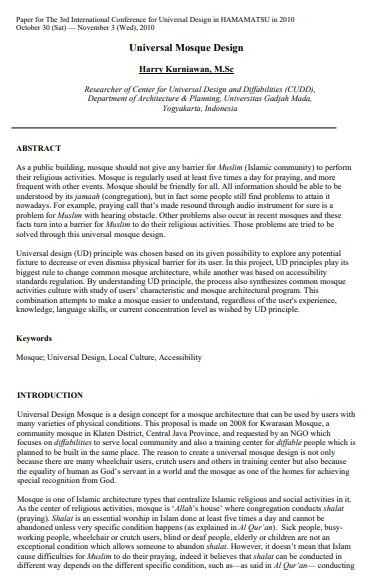
As a public building, mosque should not give any barrier for Muslim (Islamic community) to perform their religious activities. Mosque is regularly used at least five times a day for praying, and more frequent with other events. Mosque should be friendly for all. All information should be able to be understood by its jamaah (congregation), but in fact some people still find problems to attain it nowadays. For example, praying call that’s made resound through audio instrument for sure is a problem for Muslim with hearing obstacle. Other problems also occur in recent mosques and these facts turn into a barrier for Muslim to do their religious activities. Those problems are tried to be solved through this universal mosque design.
Kurniawan, Harry. “Universal Mosque Design.” In 3rd International Conference for Universal Design, Indonesia, vol. 20. 2010.
I agree to the terms outlined below:
You agree to upload and assign Mosqpedia Database the rights to use the content worldwide and in perpetuity across all current and future media platforms. Mosqpedia Database may edit, copy, adapt and translate your contribution.
The content will be distributed under the Creative Commons Attribution-Deed – Attribution-NonCommercial-NoDerivatives 4.0 International – Creative Commons
All data will be stored in line with data protection regulations.